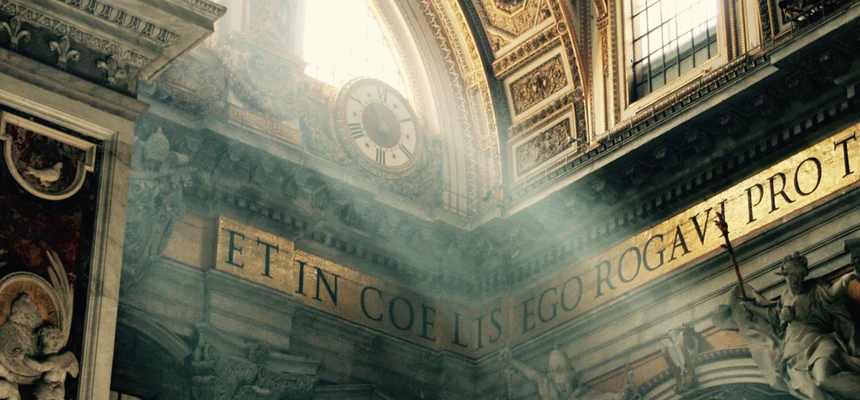
Alexander II was the first pope elected under Pope Nicholas II’s new bull, “In Nomine Domine”, whereby popes were elected only by cardinals. A new era had begun.
Born around 1010-1015, Anselm of Baggio grew up in the parish of Cesano Boscone. This was in the town of Corsico on the outskirts of Milan. Since his family held office of “captain” of Baggio, a nearby suburb, they adopted it as their surname.
Many say that he was educated under Lanfranc, a Benedictine monk, who taught in the 1030s and 1040s. Anselm was ordained by the Archbishop Aribert of Milan and was a member of the clergy at the cathedral there.
Familiar with the reforms praised by the Cluny monks, Anselm was one of the early founders of the Pataria, a reform movement in Milan. He was well known and by the time Abp Aribert died in 1045, Anselm was listed as one of the four upright men to succeed him. However, Emperor Henry III chose Guido as the new Archbishop. Guido opposed the Gregorian reforms such as no clerical marriages and a crackdown on simony. The city was up in arms with riots and unrest daily. Guido blamed much of it on Anselm so he sent the young priest to the imperial court in Germany.
Even though Emperor Henry III died in 1056, his widow, Agnes, was regent for young Henry IV. She had Anselm named Bishop of Lucca by 1059. With this rise in power and distinction, Anselm appeared in Milan as a papal legate in 1057 with Cardinal Hildebrand and in 1059 with Cardinal Peter Damian. He attended two councils declared by Pope Nicholas II in 1059 and 1060.
ELECTION AND PAPACY
Pope Nicholas died 27 July 1061 in Florence. The cardinals found it hard to get into Rome. They hired Prince Richard of Capua and his Norse troops to force their way into Rome for the election. Cardinal Stephen dutifully went to the imperial court to ask permission for the election to take place, with no result. The bull mentioned above removed control of papal elections from emperor, nobles, clergy and people. Permission for the election was a formality, not a necessity. The cardinals went ahead and chose Anselm.
Meanwhile in Germany, Empress Agatha nominated another candidate, Cadalus, bishop of Parma. He was consecrated at Basel, taking the name Honorius II. His march to Rome was the beginning of years of angst. Fortunately, a coup d’etat in the German court replaced the empress with Archbishop Anno II of Cologne as the regent. Honorius was then rejected by the court which, then, supported Alexander. Honorius was deposed by the Council at Mantua in 1064. He and his remaining supporters bothered the Church until his death.
Pope Alexander sent crusaders to Spain to rid the country of the Moors. But he was very careful with Jews. As crusaders went into Spain to fight the Moors, he ordered the Spanish bishops to protect the Jews from them.
The year 1066 was a very eventful one. The Normans turned against Pope Alexander when the Germans came out in favor of him. Richard of Capua sought to take more of the Italian peninsula and moved into position around Rome. Hildebrand begged Godfrey of Tuscany for help. The following year, Godfrey’s negotiations worked, and Richard became Duke of Apulia and Calabria, ending the aggression.
At the same time, William Duke of Normandy sent an embassy to the pope asking for blessings as he prepared for the invasion of England. Alexander not only gave a blessing, but a papal ring, the Standard of St. George and an edict to the autonomous English clergy. His message: submit to the new regime. After Hastings, the English Church was more under the direction of Rome. And William agreed to begin paying Peter’s Pence again, Lanfranc, the Pope’s old teacher, became Archbishop of Canterbury.
After spending years fighting simoniacs and married clergy, Pope Alexander could not rest. In 1072, he ordered Stanislaus of Szczepanow to be the ninth bishop of Krakow. Most likely a reformer like the pope, Stanislaus soon got into a conflict with King Boleslaw II. Within seven years, the bishop was assassinated by Boleslaw and nobles in the church. Stanislaus became a hero and a saint.
One of his last activities was to negotiate disputes between the bishops of Bohemia and Prague. It took time, blood and threats before it ended.
Pope Alexander II went to his Lord on 21 April 1073 and is buried in the Lateran.

Recent Comments